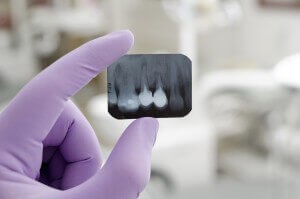
Root canals get a bad rap. Simply mentioning the words conjures unsettling images, but in actuality, having a root canal is very similar to having a cavity filled. In addition, a root canal is vital for clearing infection and keeping your mouth healthy. In this post, we offer some insight into this much-maligned procedure.
What is a root canal and why is it performed?
Here’s an interesting fact: Despite what many think, teeth aren’t completely solid. The inside of a tooth is made of soft material—blood vessels and nerves—called pulp. The pulp helps the tooth’s root grow during development. Decay eats away at the surface of the tooth, creating a cavity. Some cavities are so deep that they penetrate the pulp, and if the pulp is inflamed, it can lead to abscesses or serious infections. Deep cavities aren’t the only reasons for a teeth root canal treatment. Sometimes a chipped or cracked tooth opens the doorway for bacteria to settle deep within the tooth. During a root canal, the dentist removes the infected pulp and cleans the inside of the tooth, including any “branches” that may spring from the main root. Once the tooth is disinfected, it is sealed with gutta-percha, a rubber-like material that seals off the root so bacteria will not travel into the tooth. A temporary crown is placed on the tooth until it can be replaced with a permanent crown.
How do you know when you need a root canal?
Pain is not always an indicator. In fact, sometimes there’s no pain at all. Some may have anything ranging from mild discomfort to extreme pain, particularly when biting or chewing. Other potential signs that a root canal is in order include:
- Swelling around the tip of the tooth’s root (this does not occur in every case)
- Changing color or a shift in the shade of the tooth, typically to gray, black or yellow tint
- Appearance of a “pimple” or boil at the site of the problem tooth
The key to diagnosing a root canal is having regular visits with a dentist. Dental X-rays show evidence that the tooth is in trouble by comparing them with earlier X-rays. These subtle differences include a dark spot around the root, called “radiolucency.” Sometimes, when filling a cavity, the dentist discovers that the cavity is so deep it exposes the pulp tissue. This means a root canal is necessary. The dentist may also conduct a “percussion test.” During this test, the dentist lightly taps on the tooth using a dental instrument, causing slight pain in teeth that are irritated or need attention. Because of the wide variety of symptoms, only a dentist can accurately determine whether or not a root canal is in order. Having regular dental X-rays will enable the dentist to monitor any problematic teeth and treat cavities before they get too deep.

